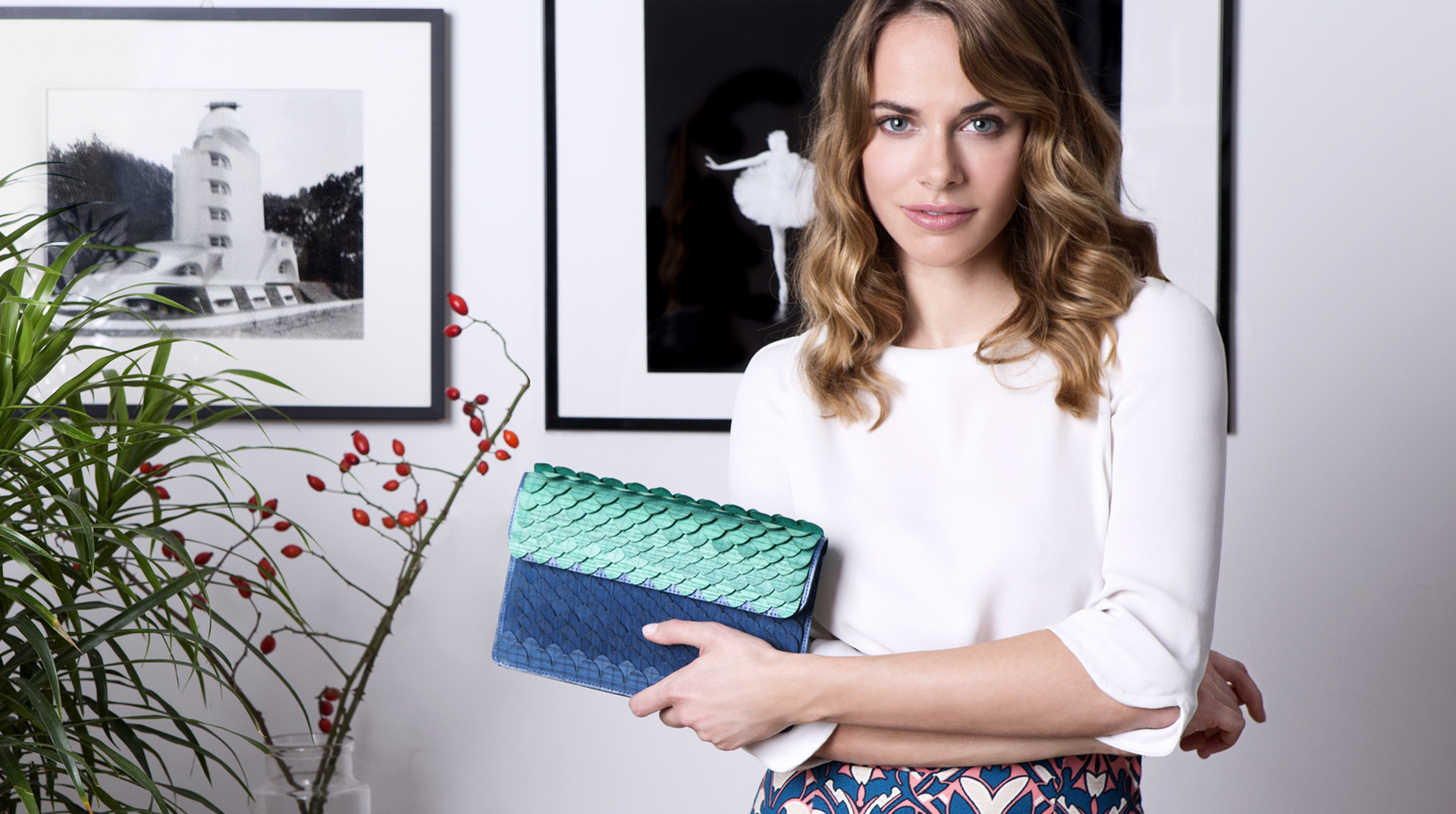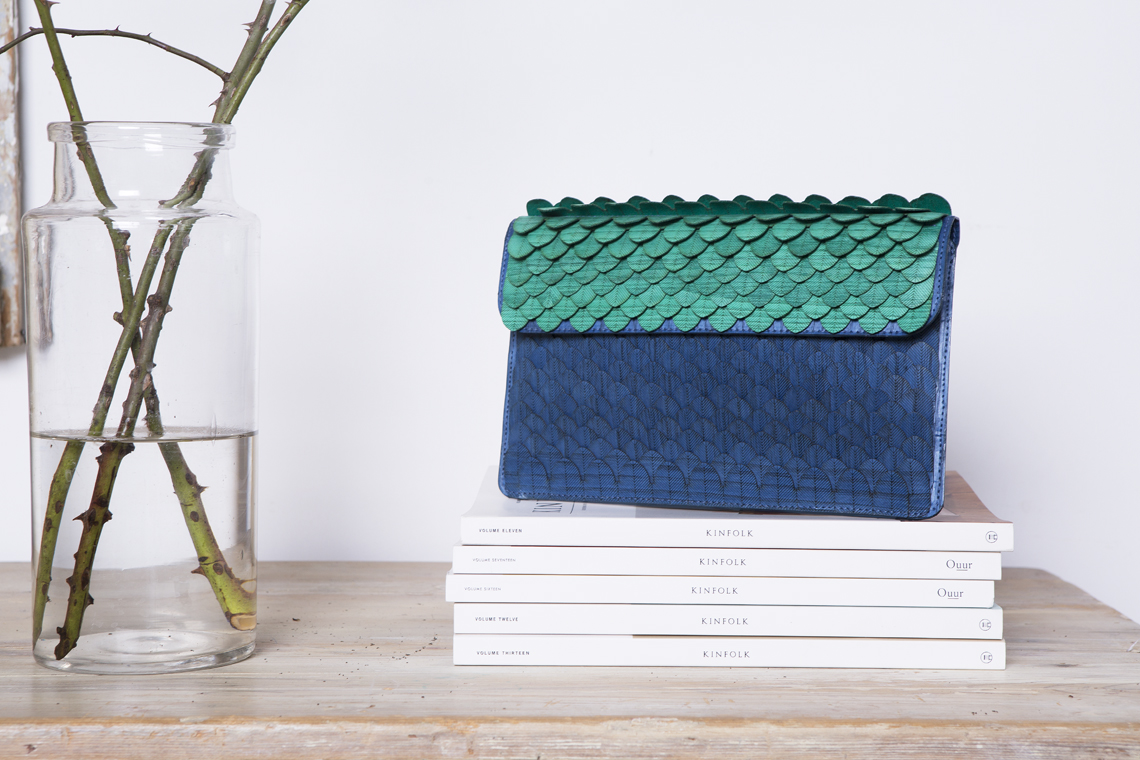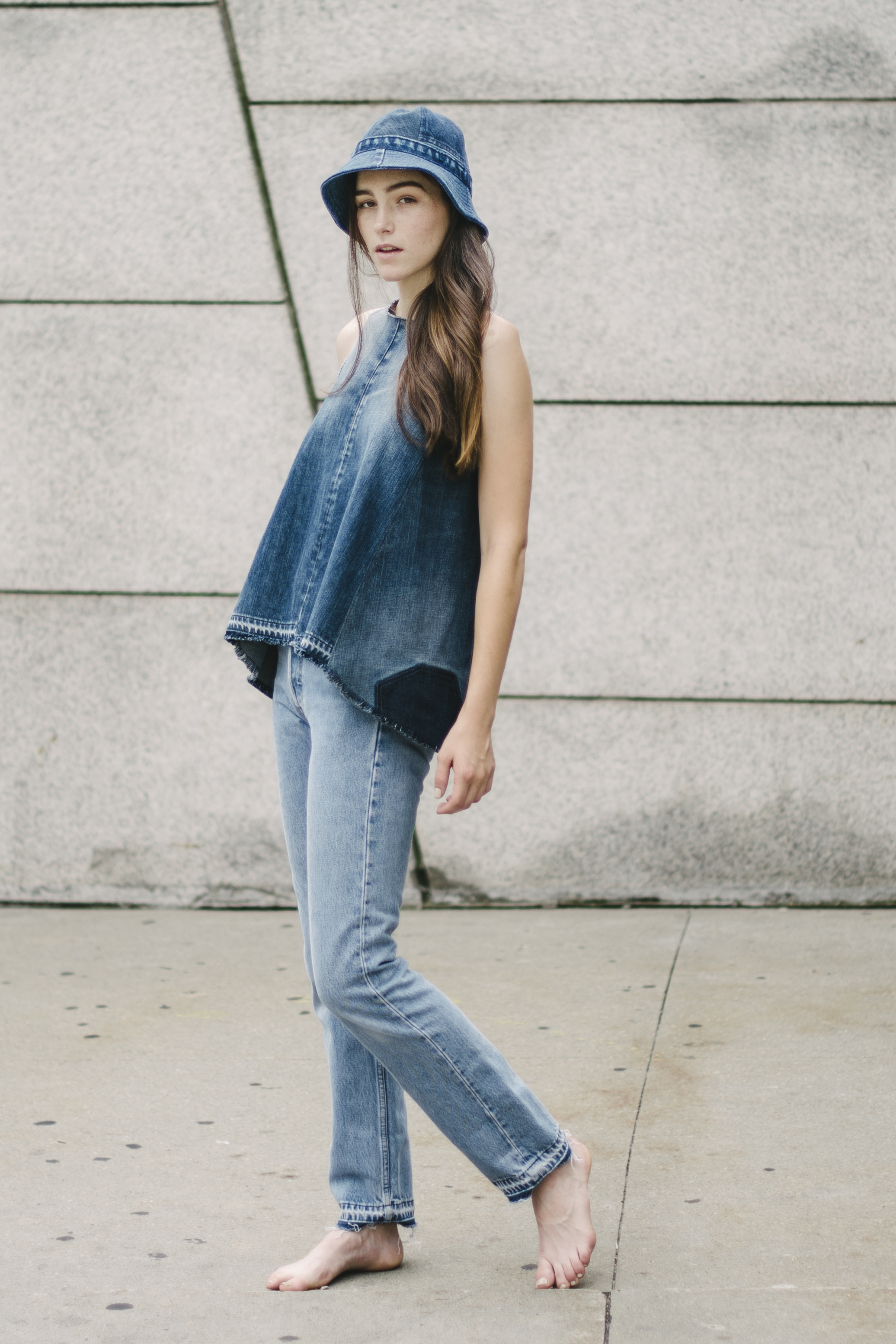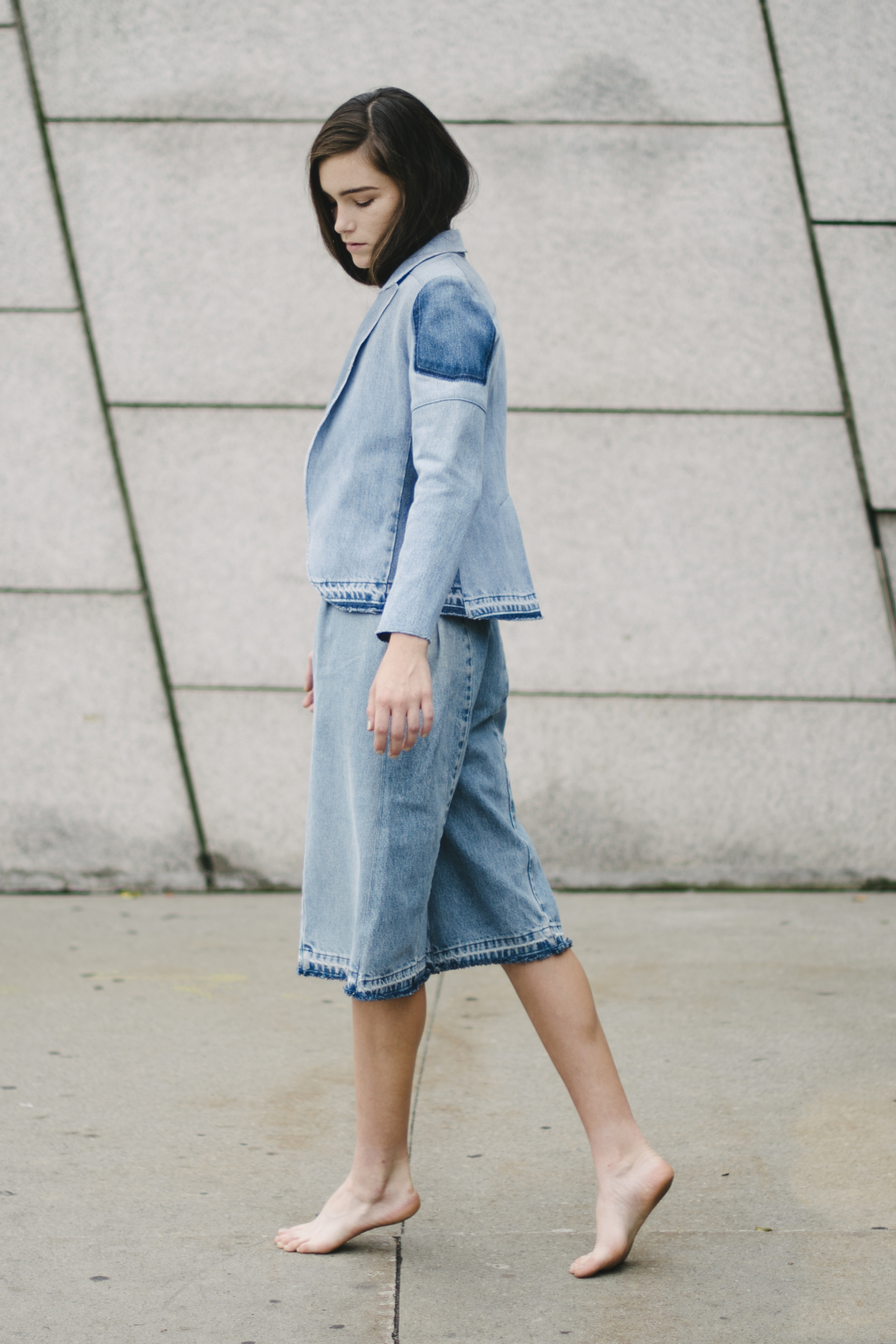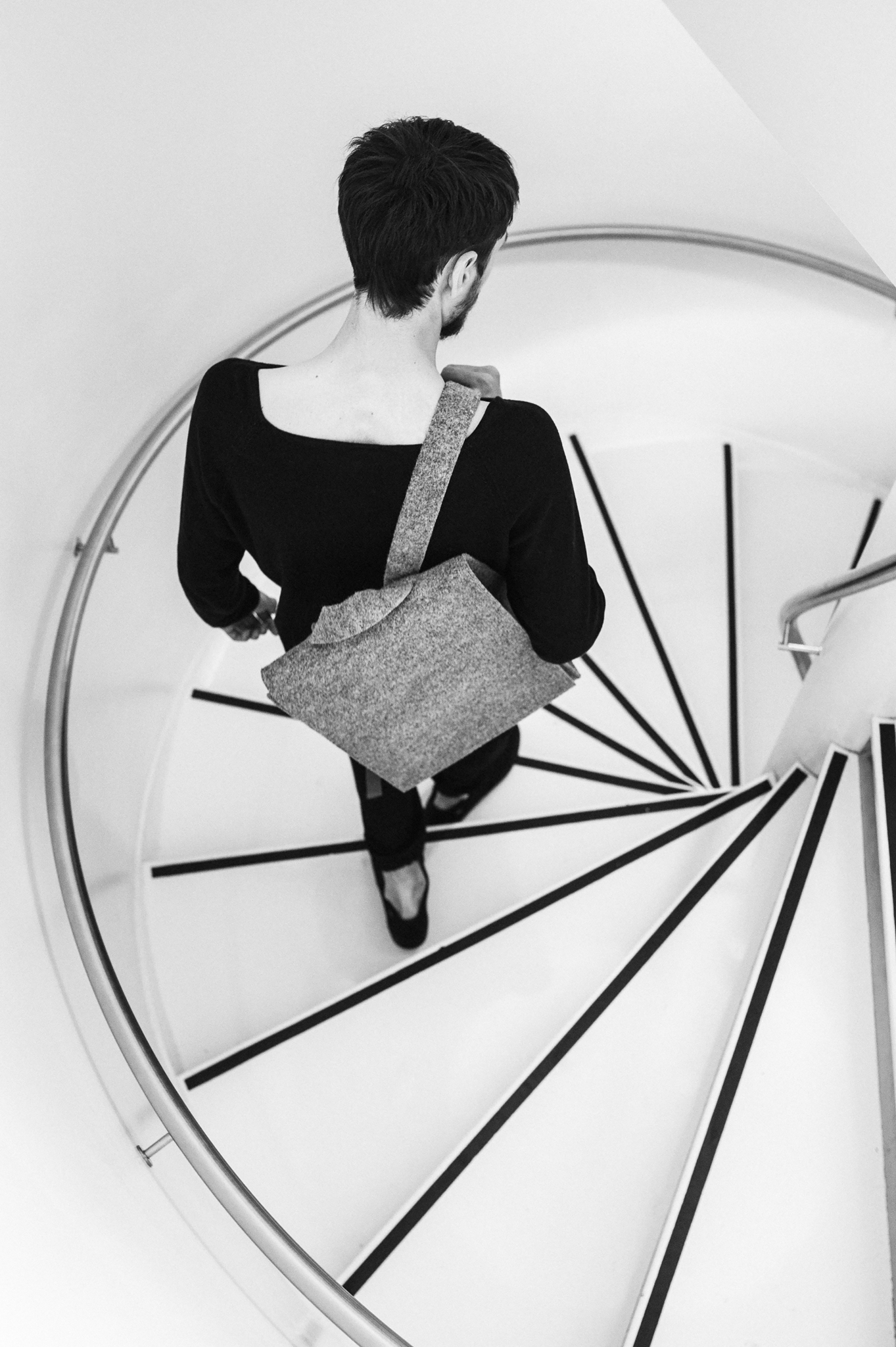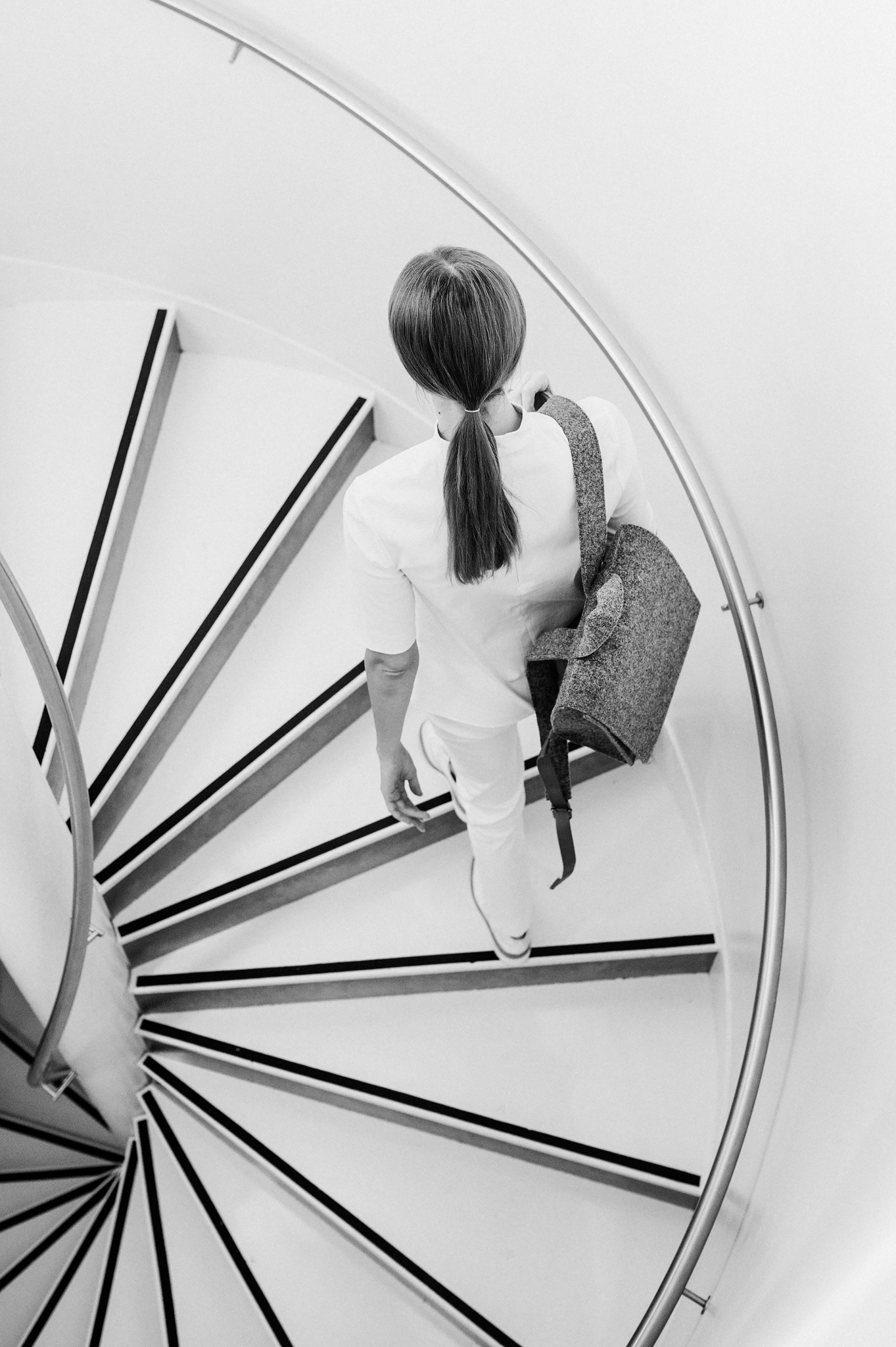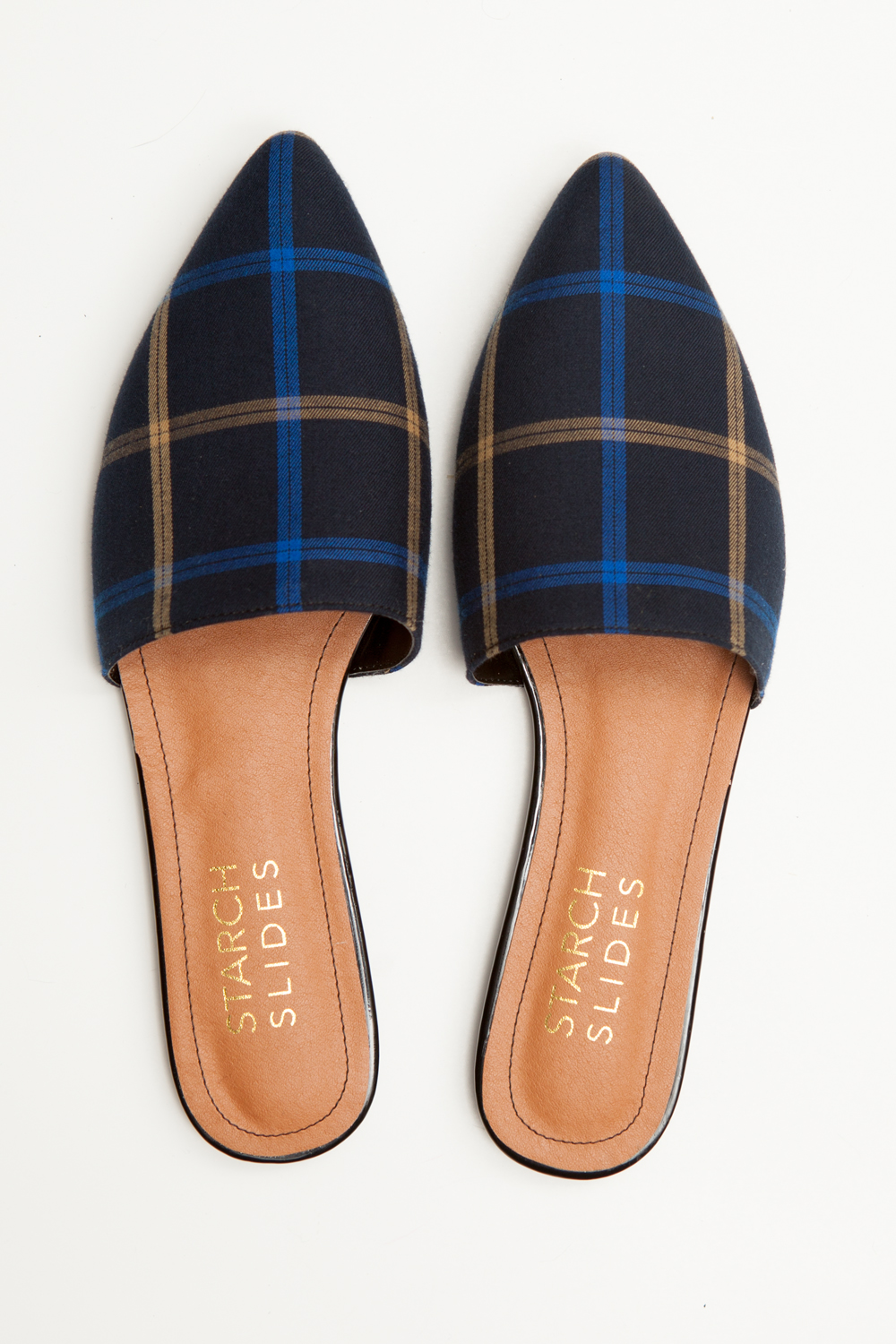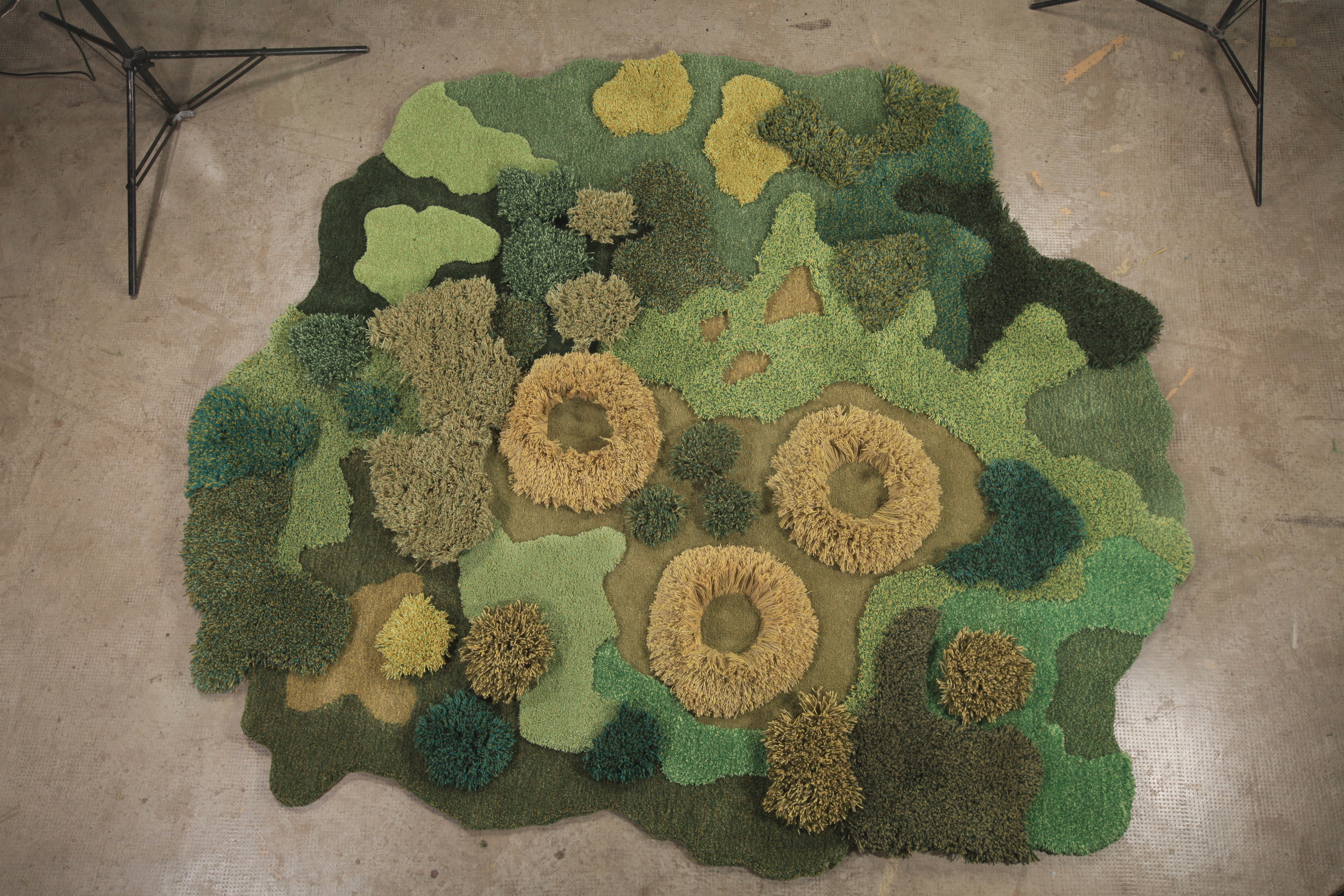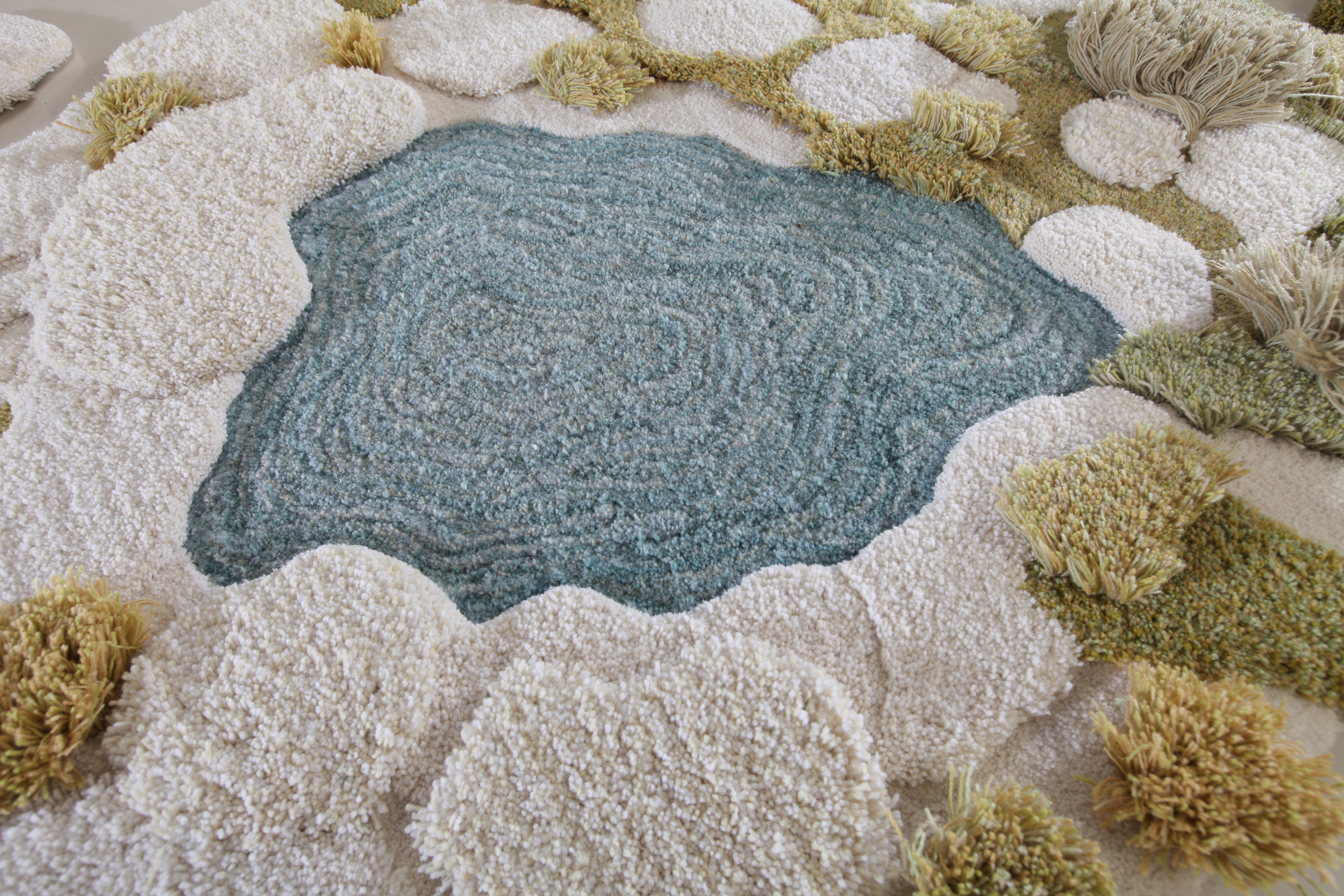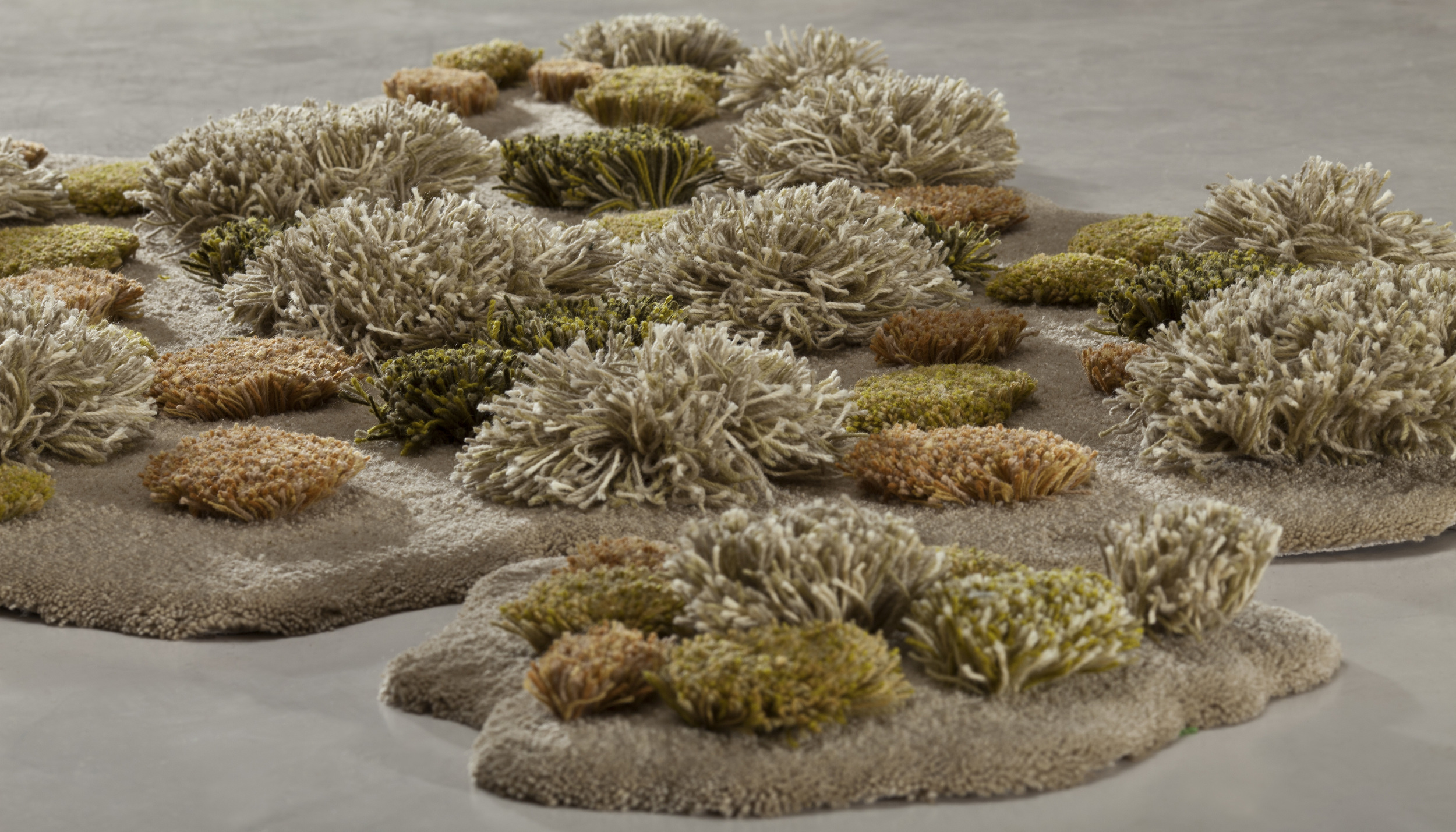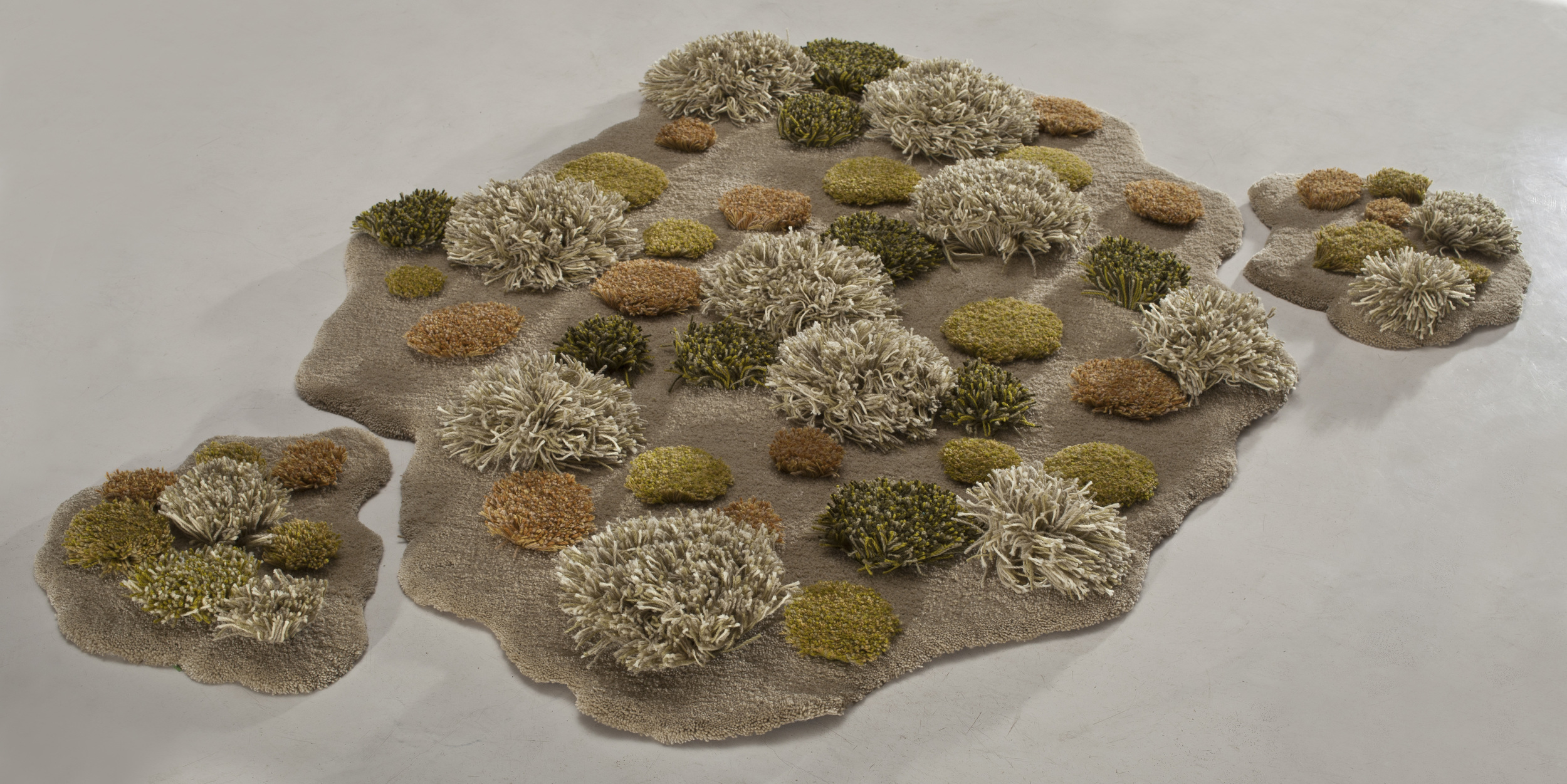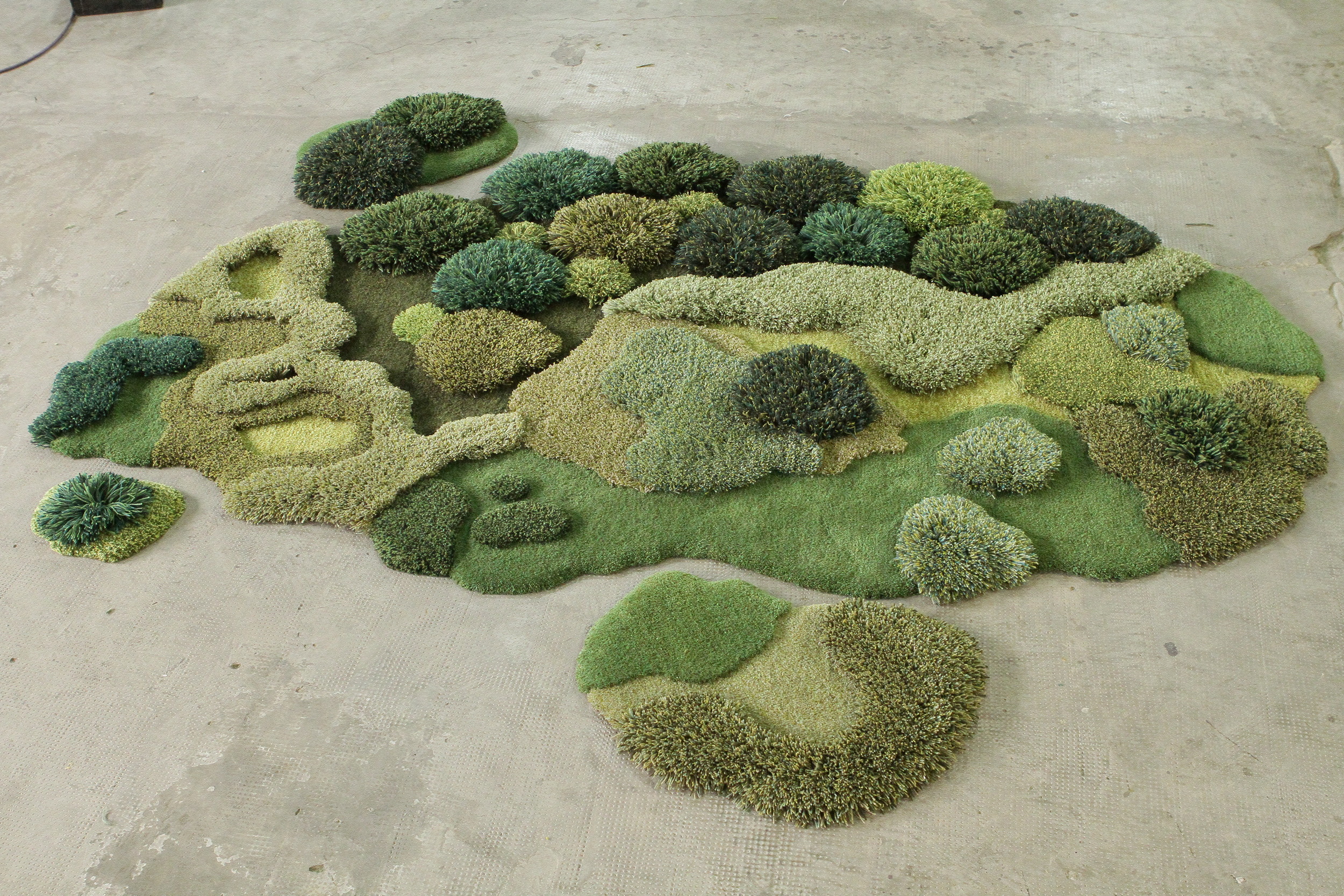How long does it take to create one masterpiece rug? What's the most complex project you have undertaken and completed?
Depending on the complexity of the piece, the production time can take from one to several months. I pay a lot of attention to details and I am extremely tedious with each and every stitch. The most complex project I worked on was a custom-made carpet designed by Olafur Eliasson and crafted by Alexandra Kehayoglou’s Studio. It consisted of a 3D carpet, which we had to adapt to a wooden topography to create a reading space in the Art Kunz Library of Berlin. This was truly challenging, because we had to develop a new method for the carpet installation. All in all, it was a great experience; we spent almost three weeks at the Studio. We worked a lot!
“Each of them is unique, with a certain texture, pattern, volume and unrepeatable palette.”
What makes a particular landscape inspiring enough for one of your rugs? What else inspires you throughout the process?
I guess the contemplation of the landscapes I love is the first step for the development of my work. Also, Argentinian geography has been very inspiring for me because, in a way, my personal history is tightly related to the history of that land. Walks through my parents garden with my son, road trips, sunsets, aerial views, the sea, the beach, my family, my grandmother, are part of this dialogue between nature, tradition and art.
You also have an inspiring Instagram account. In your view as an artist, is it important to promote yourself more as a 'brand' nowadays? Don't you feel that it has made your work more commercial?
I believe all art is very much about freedom. In a way, Instagram is a great tool for any visual artist, because it allows us to choose what we want to share about our daily work at the studio — it’s sort of a visual diary. During the last few years, artists have found new ways of creating the ‘buzz’ and circulation, it’s not merely about being a part of a gallery anymore. Even though my work is sometimes related to important brands, I really don’t find my work commercial at all. In fact, it is well known that there are new models of art business arising and concurrently with them, new ways of being an artist.
“Walks through my parents garden with my son, road trips, sunsets, aerial views, the sea, the beach, my family, my grandmother - all are part of this dialogue between nature, tradition and art.”



